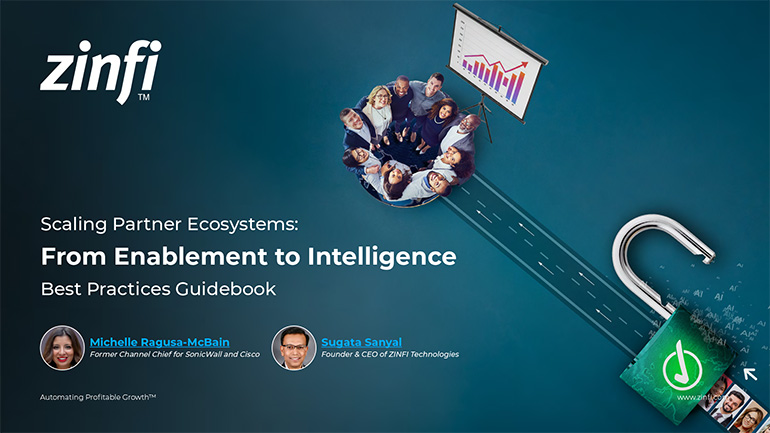Glossary - What is - Partner Relationship Management
What is Partner Relationship Management?
Partner Relationship Management (PRM) refers to the strategies and tools used to streamline and enhance the relationships between a company and its business partners. PRM aims to foster effective collaboration, improve communications, and align objectives across all partner channels. By leveraging technology, companies can manage their entire partner lifecycle, from recruitment to sales, while providing the necessary resources and support to maximize their partners’ potential. Check out ZINFI’s Partner Relationship Management solutions.
About partner ecosystem management and partner management automation, PRM is indispensable. It integrates processes like partner onboarding, training, lead management, and performance tracking into a unified system. Automation tools in PRM increase efficiency and provide actionable insights into partner activities and contributions, which are vital for cultivating a robust and productive partner network.
Key Takeaways:
- Optimized Partner Lifecycle Management: Efficient management of the partner lifecycle, from onboarding to offboarding, ensures that partners are well-equipped and motivated. PRM tools provided by ZINFI’s Partner Lifecycle Management facilitate streamlined recruitment, training, and incentivization processes, improving partner engagement and performance.
- Enhanced Channel Performance: PRM enables companies to measure and manage partner performance through comprehensive dashboards and reporting features. This capability allows for real-time adjustments and proactive management of partner channels, which is essential for achieving sales targets.
- Improved Communication and Collaboration: With PRM, companies can maintain clear and consistent communication with their partners. Features like co-branded marketing materials and collaborative tools help synchronize efforts and reduce conflicts, thereby enhancing the overall partnership quality. Explore ZINFI’s Communication and Collaboration Tools.
- Scalable Growth Through Automation: Automating routine tasks within the PRM framework frees up resources and allows companies to focus on strategic initiatives. This scalability is crucial for adapting to market changes and expanding partner networks efficiently. Learn more about automation in PRM at ZINFI’s Partner Automation Solutions.
- Better Partner Experience and Loyalty: By utilizing PRM systems, companies can provide a seamless and personalized partner experience, significantly boosting partner loyalty and long-term collaboration. Watch Jay McBain discuss about partner loyalty.
Summary of Takeaways:
Partner Relationship Management is crucial for nurturing and expanding a company’s partner ecosystem. Through optimized lifecycle management, enhanced communication, and automation, PRM tools help maintain a healthy and productive partner network. The integration of PRM into business strategies not only improves operational efficiency but also drives growth and partner satisfaction.
Key Examples:
- Automotive Manufacturing: PRM in automotive manufacturing involves managing relationships with parts suppliers and dealers to ensure timely deliveries and maintain quality standards.
- Consumer Electronics: PRM focuses on collaborating with distributors and retailers to optimize supply chain operations and enhance product availability in consumer electronics.
- Energy Production: PRM is used in energy production to manage relationships with various stakeholders, including local governments and regulatory bodies, to ensure compliance and streamline operations.
- Financial Services: Financial services companies use PRM to manage broker and advisor networks, ensuring they are informed and compliant with the latest financial regulations.
- Food and Beverage: PRM helps manage relationships with suppliers and distributors to ensure product quality and efficient logistics in the food and beverage industry.
- Healthcare Services: PRM in healthcare involves coordinating with various providers and suppliers to improve patient care and streamline health services.
- Information Technology: IT companies use PRM to manage vendor relationships and distributor networks, which is crucial for delivering integrated technology solutions.
- Pharmaceutical Development: PRM in pharmaceuticals is vital for managing relationships with clinical trial partners and regulatory authorities to ensure product development timelines and compliance.
- Retail Industry: Retailers leverage PRM to optimize supplier relationships and manage franchise operations, enhancing overall business efficiency.
- Telecommunications: In telecommunications, PRM manages complex ecosystems of service providers, vendors, and regulatory bodies to maintain service quality and compliance.
Conclusion:
Partner Relationship Management is a strategic approach focused on optimizing the relationships and interactions between a company and its partners. By integrating PRM tools and strategies, organizations can enhance communication, streamline management processes, and foster a collaborative and supportive partner network. This management tool drives operational efficiencies and supports scalable growth, ultimately contributing to improved business outcomes across various industries.
Associated Keywords:
- PRM Tools
- Partner Lifecycle Management
- Channel Collaboration Strategy















